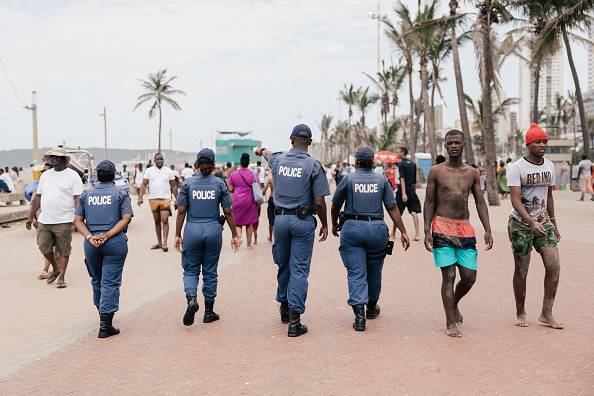Human rights and environmental activist turned author Kumi Naidoo’s life descended into sudden darkness one day when he was a mere 15 years old.
After the unthinkable tragedy of losing his mother to suicide, Naidoo’s life took a direction that may have saved his own life. Ironically, to save himself from a heartbreak, he plunged into the struggle against apartheid, which exposed him to possibly greater risk.
The pain and anger he felt after losing his mother may very well be the kind of recklessness and idealism that was necessary for him to commit himself to a life of fighting a brutal system, for justice to triumph.
“In the weeks after Ma’s death, I struggled to make sense of her choice to end her life. I felt profound grief, rage and a deep sense of loss,” Naidoo writes in a chapter titled The Deep Anger of Loss from his memoir, Letters To My Mother: The Making of a Troublemaker.
Naidoo writes in intimate detail about the most difficult day of a 15-year-old boy’s life — learning of his mother’s death from a younger sibling. He also writes with incredible honesty about the pain his siblings and the rest of the family endured in the aftermath.
There is a particular type of reckoning that comes with losing a loved one to suicide. Beyond the pain and loss, there is always pondering whether or not those who are left behind could have done anything to save that loved one. In this book, Naidoo shares with careful consideration and kindness towards everyone who was affected by the death of the family matriarch.
In this multi-layered memoir, the author begins his political journey by drawing an image of apartheid-era Chatsworth, Durban, a place he remembers with great fondness. Although beautiful in many ways, his childhood was quickly interrupted by tragedy when he lost a sibling well before his mother’s death.
He grew up surrounded by love and stability, with a father who worked hard to provide for his family and a mother who assumed the role of nurturer for everyone in her life and anyone who needed her.
Extended family members were always nearby and ready to lend a hand and give a much-needed hug, in proper big Indian family fashion. After the death of his mother, Kumi and his siblings were never lacking in love, as grannies and aunts instinctively embraced them.
Growing up in Chatsworth in the 1980s, with gangs ruling the streets, there was always the danger that Kumi and his brother Kovin could fall in with the wrong crowd. The gangs were not covert in their dealings and even less so with their spoils.
In a poverty-stricken township, any teenager would have fancied having what they had, but the two brothers and their friends were spared from gang life, only to get into community organising and eventually dedicating their lives to the struggle against apartheid by joining the underground ANC. A different brand of troublemaking.
Published by Jacana Media, the book tackles a conversation on socioeconomic issues faced by Indian townships in Durban, such as Phoenix and Chatsworth.
Naidoo speaks frankly about the advantages that Indian townships had over their black counterparts while making a comparison between Indian, coloured and white neighbourhoods.
“Compared to people in the African townships, the Indian working class, while no doubt oppressed and discriminated against, enjoyed advantages in terms of education and healthcare and other public amenities.
“By 1980, Chatsworth had only one swimming pool, two public libraries and a few mediocre sports fields serving a population of over 200 000 people, but this was much better than what could be found in the neighbouring African townships. Many families like mine aspired to social and financial mobility, but the disparities of wealth made this very hard to achieve,” writes Naidoo. This was another motivation for him to join the ANC in its fight against the unjust apartheid government.
With increased awareness of events outside of his own community and against the backdrop of the 1976 Soweto uprising, which saw students take to the streets to protest the introduction of Afrikaans as a medium of instruction, Naidoo triggered his own activism work.
As a learner at Chatsworth High School he mobilised his classmates and peers from neighbouring schools to protest the apartheid government “for providing inferior education at African, coloured and Indian schools”, he writes. This one boycott would set off years of raids, arrests, hideouts and name changes as Kumi Naidoo was now an enemy of apartheid South Africa.
The enthralling storytelling keeps the reader constantly rooting for the protagonist because of the adversity that seems to follow him. Within the main story, you will read about the beautiful relationship between Naidoo and his brother Kovin, who was not only his mother’s child, but a comrade who he trusted with his life.
You will also read about a struggle between father and son as they tread through life with the burden of pain and loss, which often manifests as anger. One having lost a wife and the other, a mother, both of them had to deal with complex emotions without abdicating their roles within the family unit.
The story is told with such beautiful colloquial flair that it feels like you’re sitting across from the author, sharing a cup of tea as he lays bare the details of his life. You will be transported to political rallies where you feel the need to shoot up your fist in solidarity. In the same breath, you will attend school concerts and feel the gentlest sentiments while imagining little children singing perfectly off-tune.
You will meet a young Judge Edwin Cameron already doing, in the 1980s, what eventually became a huge part of his life. You will meet renowned Durban politician Amichand Rajbansi being dangerously eccentric while flirting with the enemy. You will weep at the goodbyes, celebrate when the security police are outsmarted by university students and you will laugh with apprehension at the lengths to which Naidoo goes to disguise himself.
Reflecting on the current state of affairs in South Africa, Naidoo says he has no regrets for devoting his life to the struggle. What he does regret, however, is the government’s failure to honour important promises made at the dawn of democracy.
“I do have deep regrets on missed opportunities to take the majority of our people out of poverty.
“I regret that the education system hasn’t advanced. I also regret that, by now, we haven’t taken our people from rural areas out of abject poverty.”
When I ask him what he thinks the future has in store for South Africa, he responds with enthusiasm, referencing Imtiaz Sooliman, founder of humanitarian organisation Gift of the Givers, saying that South Africans will need to forget about government and focus on mobilising to see the change they want.
“The future is shaped by people with agency. The people are going to have to say, ‘Enough is enough!’”
In the postscript and final letter of the book, Naidoo writes to his mom on 18 June 2022, just four months after the death of his son-in-law, the rapper, producer and fashion icon Rikhado “Riky Rick” Makhado.
In the letter, Naidoo tenderly tells his mother about his last conversation with his son and the moment he received that harrowing phone call about his death.
The theme of suicide and mental health is a constant in the book and Riky Rick’s story is the final gut-wrenching reminder that South Africa is faced with some of the highest suicide figures of our times, with suicide being the leading cause of death among South Africans aged 15 to 29, according to the South African Depression and Anxiety Group.
Apart from a couple of misspelt African names, the book kept me captivated and didn’t lose my attention for a moment.
Stories about young activists will always find a place in the South African discourse and Kumi Naidoo makes an excellent case for youth activism. Letters to my Mother:
The Making of a Troublemaker by Kumi Naidoo is published by Jacana and costs R300.





















Discussion about this post